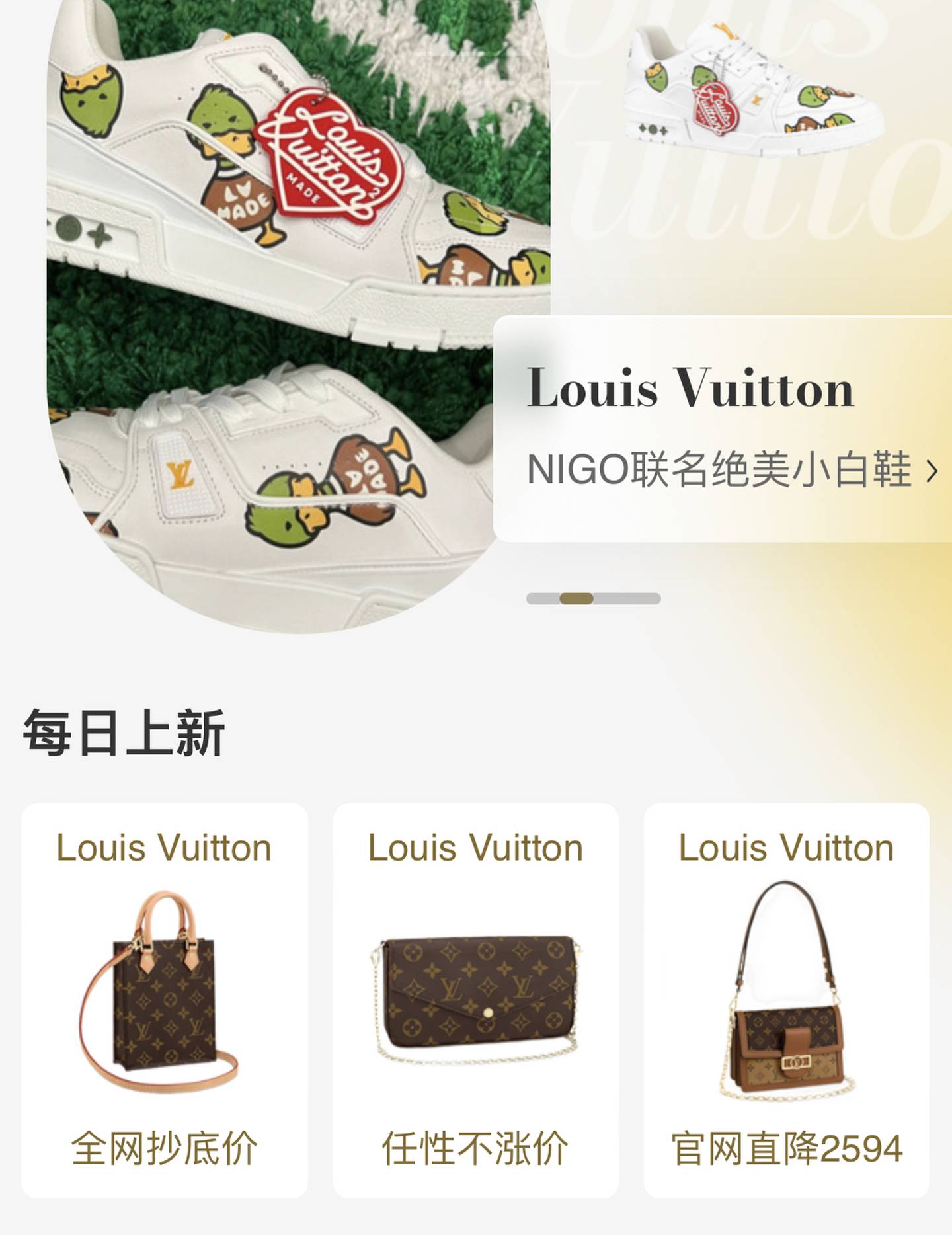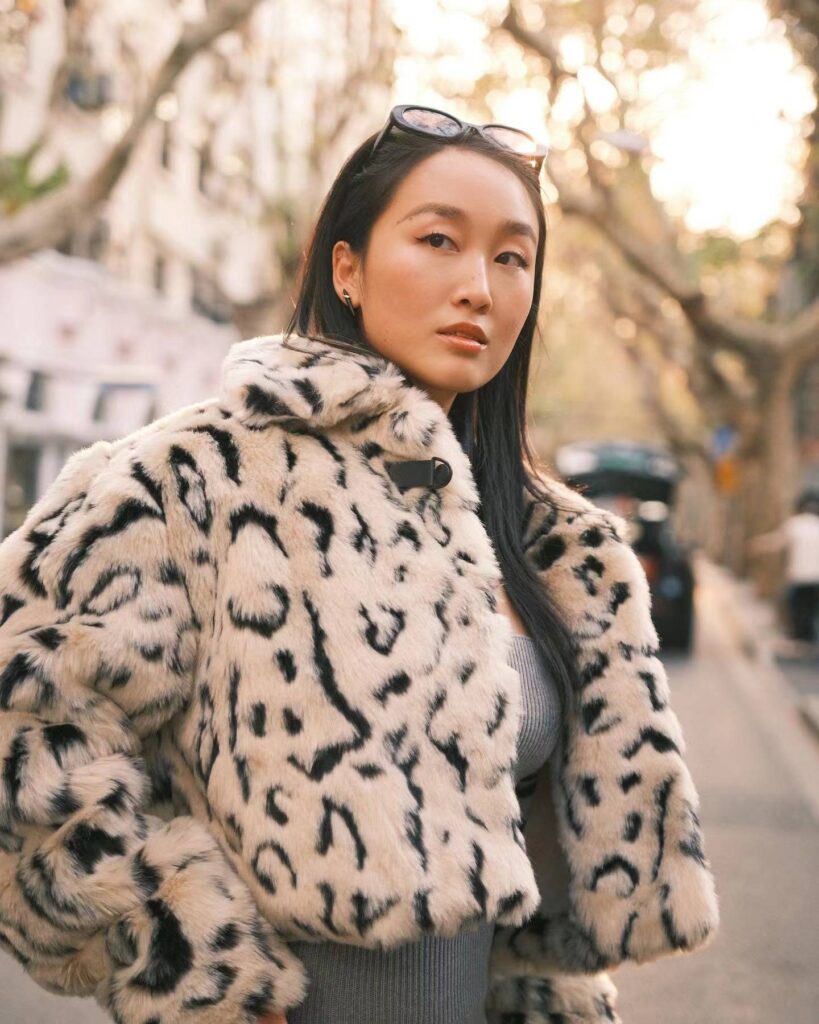Shared from www.businessoffashion.com
Xiaohongshu doesn’t fit neatly into a social media archetype that is familiar to Western audiences. It is often compared to Instagram, but one key difference is that content from anyone can show up in the feed — not just from people you follow — as Xiaohongshu’s filtering algorithm recommends user generated content based on selected interests.
While the platform does feature a lot of aspirational beauty and fashion content that would look familiar to users of Instagram, Xiaohongshu also includes imagery of exotic travel destinations, restaurant reviews and a diverse range of tutorials including the kind of follow-along Pilates workouts people in the West find on YouTube and even home DIY projects. Content is presented alongside livestreaming channels and integrated with an e-commerce function to create a user experience that is unlike its social commerce competitors.
E-commerce has been part of the Xiaohongshu experience almost from the beginning, though the platform has never been able to compete with online selling behemoths, such as Tmall, Taobao and JD.com, in sheer volume terms. Instead, Xiaohongshu’s point of difference is in its ability to influence consumer decisions at the top and middle of the marketing funnel. In Chinese, the term often used to describe it is “zhong cao,” which literally translates as “plant grass,” but is understood to mean sowing the seed of a product or brand in the mind of the consumer so that it will later come to fruition as a purchase.
The common thread running through most of the platform’s content is an attractive lifestyle element, often combined with a tone that leans towards friendly advice. Young people — 72 percent of Xiaohongshu’s users are under 30 — look to Xiaohongshu to get guidance in a manner they might use when approaching slightly older and more worldly friends or siblings they wish to emulate.
The majority of Xiaohongshu users (around 70 percent) are female, perhaps unsurprising for a platform that began life in 2013 as a bulletin board site on which people shared their overseas shopping experiences, though the percentage of male users is increasing (up 10 percent over the last two to three years) as the platform moves to diversify its content streams.
Plans for a US IPO, which was expected to raise $500 million, were scuttled last year by increasingly stringent regulations, but by November, the platform had raised $500 million in a new funding round, leading to a valuation topping $20 billion. Marketers abroad used the translated name “Little Red Book” for Xiaohongshu in the early years.
Long a stronghold of beauty brands, who often lead the way with experimental social media strategies in China, Xiaohongshu now provides a home for luxury fashion brands as well. Louis Vuitton, Gucci, Celine, Saint Laurent, Givenchy and Prada are all present with official accounts.
Though more fashion players seem to join each month, some do not use the platform as well as they could to reach a cross-section of Xiaohongshu’s 200 million monthly active users, many of whom hail from first and second tier cities.
Understanding the Xiaohongshu ‘sisterhood’
The first mistake brands make when it comes to Xiaohongshu, according to Yi Kejie, content manager at China Marketing Insights, is misunderstanding the tone of the platform, opting for overly beautiful brand imagery and official brand language in an environment that values authenticity and, in some senses, rewards imperfection.
“Most brands don’t treat Xiaohongshu seriously, they open their account and think they already have the assets to attract young Chinese people, especially girls, [so] they post content that is copied and pasted from somewhere else,” she said. “Xiaohongshu has a very strong culture of sisterhood, a really close relationship between the content creators and users so this kind of official tone doesn’t work on this platform.”
One content creator who seems to agree is Liu Ruixue, better known as Cloe, a KOL (or key opinion leader, as influencers are known in China) on Xiaohongshu who says that that nailing the right tone for the platform is key to successful engagement.
Liu, whose studies in Milan were interrupted by the pandemic, has been devoted to her social media career for the past year, building a following of 600,000 on Xiaohongshu, of which she estimates “about 96 percent” are female. Her content, which focuses on female empowerment, has made her a popular brand partner for global brands such as Yves Saint Laurent and Armani.
“Xiaohongshu is a very special platform,” Liu said. “A lot of girls will be posting here that are not perfect, not the most beautiful in terms of society’s standards [and] on other platforms, you might get a lot of hate and negative comments, but [on Xiaohongshu, users] always support you and tell you how beautiful you are, there’s a lot of body positivity, which is why I love this community. It’s very friendly and very welcoming.”
This makes Xiaohongshu a markedly different environment to other major platforms that are often dominated by vicious wars between celebrity fan factions. On Xiaohongshu, celebrities are present, but they are not the stars of the show, with normal users often able to break through and rack up impressive levels of engagement with content that resonates with the community.
The first step for any brand on Xiaohongshu, Liu says, is to study the kinds of topics that gain traction on the platform, as well as the engagement style of popular KOLs and KOCs (‘key opinion consumers’, as micro-influencers with smaller but loyal followings are known in China).
One of the most successful campaigns she has been part of, Liu adds, is with Tissot. The watch maker’s brief to KOLs was to tell real-life stories about how they “found their inner beauty.”
“That’s a very good topic, it combined well with the products and that direction is very suitable for me as a blogger. When those three things are aligned, we can create really good content,” she said.
According to Xu Fengli, Xiaohongshu is a good fit for many brands because users are actively encouraged by the platform to “share, tag and talk about products.” The Shanghai-based influencer and digital content producer also known as Peter Xu, says that Xiaohongshu is less costly than other platforms like Weibo which charge high commissions for advertising or brand-focussed content.
Bringing luxury brands down to earth
One challenge for luxury brands is that the ordinariness and authenticity that makes a KOL or KOC beloved by users on Xiaohongshu is not necessarily going to be a good fit to sell exclusivity, Xu adds.
“A lot of clients will come to me and say, ‘We have to have 10, 20 KOCs or KOLs from Xiaohongshu because that’s in our KPI (key performance indicators); we don’t know who they are and we don’t [necessarily] want them, but we have this KPI [to have a certain number of KOLs from each major platform in China],’” Xu said, meaning that the way which some fashion brands utilise content-creators is often ineffectual because they are working at cross-purposes with the strengths of the platform.
Steven Luo, Xiaohongshu’s head of brand marketing solutions for luxury and fashion, says “we [do] encourage brands to open their own official accounts on Xiaohongshu,” but a brand account alone is not likely to be enough to move the needle. The real engagement on Xiaohongshu happens with KOL accounts and through user-generated content, not with brand accounts.
In a bid to help connect brands to influencers, Xiaohongshu has its own advertising platform which is also where branded content is meant to be funnelled through. Though there are both brands and influencers that have tried to skirt this official channel by making side deals to evade paying a commission, this is naturally frowned upon by the platform. In any case, Luo says the platform has had great success for beauty brands such as Estée Lauder, which it helped tap 97 micro-influencers to try its Revitalising Supreme+ Moisturiser last year in a campaign that reached over a million users.
Always protective of the authenticity that is Xiaohongshu’s lifeblood, Luo says Estée Lauder in this case had no control over the resulting content, and though this approach could be risky for brands, the only way to benefit from the users’ trust in what they see and read on Xiaohongshu is to allow for the possibility that some negative reviews will creep in.
On other platforms, you might get a lot of hate and negative comments, but [on Xiaohongshu] it’s very friendly and very welcoming.
This will be a key consideration for any brand looking to tap Xiaohongshu’s considerable pull: how much are they prepared to cede control of brand image to KOLs and netizens?
There seems little way around it in 2022, as brands suspected of trying to buy positive reviews from Xiaohongshu users have been banned in recent months as part of a broader crackdown on “false marketing.”
The company has had a team in place since 2019 with the job of rooting out ghost written reviews, which have been a constant problem for Xiaohongshu over the years. A controversy exploded that year when posts on Weibo showing people advertising their services to ghost write reviews on Xiaohongshu went viral, causing an uproar among users and forcing Xiaohongshu to proactively police the space.
“The trusted recommendations and reviews written by ordinary users has made Xiaohongshu a destination for the new generation of consumers and significantly influences the decisions they [make about eventual purchases],” Luo said.
Xiaohongshu has long tried to develop a closed loop ecosystem that moves from discovery, to inspiration and education, to purchase, as one of the world’s early adopters of social commerce, but the final conversion stage of the user journey has proved difficult. If it were to lose out on the trust of users in the earlier stages, the platform would be left with little to differentiate itself against competitors in China’s cutthroat social media space.
Broadening the user base without losing its identity
As valuable as the platform can be for users to learn about brands and products, Xiaohongshu is not just a platform for brands to use to disseminate information. It is also one they can learn a lot from about consumer behaviour and interests.
While other platforms in China cater to specific subcultures and are valuable places to discover rising trends among their target audience (Douyin, Bilibili and streetwear platform Dewu all fit into this category) Xiaohongshu has been broadening its repertoire of topics, hobbies and subcultures in order to diversify its user base.
But this diversification is also a double-edged sword. In recent months the flaws of user-generated content that aims to attract more male users has become apparent as underage girls posting provocative videos on Xiaohongshu, as well as content related to gaming that also featured scantily clad female characters, were featured in a Chinese state-run CCTV News broadcast last December. Xiaohongshu responded by saying it would better protect minors and better police inappropriate content.
More broadly speaking, the fact that Xiaohongshu is a stronghold for young, urban, aspirational Chinese women has been an appealing proposition for fashion and beauty brands but does its loss of focus through the more recent addition of DIY and crafting projects, cooking and life hacks make it a less attractive proposition?
Not necessarily. Finding ways to tap into these new hobbies or niche interests in an on-brand way could make for compelling campaign content, or inspire limited edition products for the right fashion player. The explosion of glamping in China during the pandemic period was a trend that first emerged on Xiaohongshu, and smart brands have latched onto the trend and launched successful activations around it.
For example, the garden of Prada’s cultural hub, Rong Zhai, a restored mansion in downtown Shanghai, was decked out in canvas tents last May, with chic products from its Prada Outdoor range on show and a programme of workshops exploring gardening, horticulture, camping, coffee, and mixology bookable through the brand’s WeChat mini-programme.
“We can share new trends with brands,” Luo said, adding that Xiaohongshu also offers workshops so brands can learn how their own products are trending on the platform and respond to those trends.
:quality(70)/cloudfront-eu-central-1.images.arcpublishing.com/businessoffashion/I4AWKQYBMVHXBCQR7KHIVM6DPU.jpg)
“We recently did a workshop with YSL… their Niki bag is so hot on the platform now… [so] they wanted to learn [more]… so they can prepare. [When] users from Xiaohongshu [message] sales associates [from luxury brands] asking about a hot bag, [they want to] make sure it’s in store so they can come in and purchase,” Luo said.
Xiaohongshu wouldn’t be drawn on revealing its targets in terms of gross merchandising volume (GMV) or in-app sales on the platform, and it remains a platform with less concrete return on investment than some others. This, combined with the need for specialised content, tone and KOL community knowledge required to succeed on the platform, means the investment required to succeed on Xiaohongshu can be considerable. But so too can the reward.
In most cases, the platform is not for brands pursuing a half-hearted strategy. For those willing to go all in, however, it can be a valuable part of the marketing mix — especially smaller, niche brands without the size and scale to be able to attract traffic on Tmall. For these players, a “planted seed” on Xiaohongshu could make a big difference in the China market.
Though it doesn’t offer an audience thinking of clicking the buy button as soon as they open the app, as many do when they go to Tmall, or the kind of control over image and messaging beloved by brands on WeChat, what it does offer is a community that is ready and willing to learn. Brands looking to tap into that sentiment would do well to invest more to understand the nuances of the consumer mindset that prevails on the platform to unlock its full potential.
时尚与美容
FASHION & BEAUTY

Fast-Fashion Giant Shein’s Singapore Shift
The company is set to quadruple its Singapore-based staff to 200 and has made a Singapore firm its de facto holding company, according to people with knowledge of the matter and a Reuters analysis of filings by the online fast-fashion retailer. Official documents also show Chris Xu, Shein’s founder and chief executive, has become a permanent resident of the city-state. The developments are in line with reports that Shein wishes to list in New York this year and that Xu is looking into a change of citizenship as a way to bypass tougher Chinese rules for offshore IPOs. Shein later denied that its executives were seeking foreign citizenship or that the firm was planning an overseas IPO. (BoF)
Chinese Superstar Xiao Zhan is the New Face of Nars
The beauty brand announced one of China’s hottest celebrities as its new spokespersons Sunday, and within 24 hours, the video related to the announcement had been viewed 37 million times on Chinese social media platform, Weibo. Xiao Zhan, who has been at the centre of controversy in the past due to his rabid fan base getting into online “wars” with fans of other celebrities, he remains a popular choice for brands. He already has deals with international names like Gucci, Tod’s and Zenith, as well as Chinese brand Li Ning and e-commerce platform JD.com. (BoF)
科技与创新
TECH & INNOVATION

Alibaba’s Koala Haigou Launches Luxury Channel
The cross-border e-commerce platform owned by Chinese tech giant Alibaba has launched a luxury channel, offering more than 10,000 products from more than 200 brands including Dior, Louis Vuitton, Burberry, Coach and Givenchy in segments from ready-to-wear to accessories, jewellery and watches. According to local media reports, the Hangzhou-based company is, in part, working with more than 100 European-based retailers, as well as collaborating with famous Japanese luxury resellers like Daikokuya Inc. and Reclo for pre-loved luxury goods. (BoF)
Chinese Tech Giants Invest in $8 Trillion Metaverse Opportunity
In China, the total addressable market for the metaverse could be 52 trillion yuan, or around $8 trillion, Morgan Stanley said in a note published last month. Companies like Tencent, NetEase, TikTok owner ByteDance and Alibaba could be the front-runners in this space among China’s internet companies. These firms are thought to have an advantage of getting early mover metaverse advantage because of their strength in gaming and social media, two sectors likely to feature heavily in the metaverse’s initial iterations. (CNBC)
消费与零售
CONSUMER & RETAIL

Adidas Denies Sales Will Slide in China This Year
The German sportswear company said it will grow its China market business in 2022 even after being hit by renewed pandemic restrictions and the aftermath of a consumer boycott of some Western brands. The comments come after Manager Magazin reported Adidas expects sales in China to be down €400 million ($455 million) in 2022, without citing its sources. Asked about the article, an Adidas spokesperson said: “Our business in China grew in 2021 and our business in China will grow in 2022 as well.” Adidas’s third-quarter sales fell 15 percent in Greater China, although they were up 15 percent in the first nine months of the year. The company reports full-year 2021 results Mar. 9. (Reuters)
SKP Beijing Tops Domestic Shopping Mall Revenue List Again
The luxury retailer reached sales of nearly 24 billion yuan ($3.8 billion) in 2021, according to Linkshop, a Chinese retail industry data provider. It is the 10th year in a row that SKP Beijing has topped the list. Collectively, the 52 retailers on the list had sales of more than 300 billion yuan in 2021, with 35 of them achieving double-digit year-on-year growth last year. (Ladymax)
政治,经济与社会
POLITICS, ECONOMY, SOCIETY

China’s Ukraine Dilemma
Though most of the world sees the Ukraine crisis as a standoff between Russia and the West, China is managing its own involvement in the crisis. The country has been attempting to navigate the growing closeness of its relationship with Russia while also downplaying the chances of war breaking out. In China’s best case scenario, it can keep Russia happy, maintain trade with Ukraine and the EU and avoid getting caught up in sanctions levied by the West against Russia. Doing all this at once, especially if the conflict escalates to all out war, is likely to prove impossible as the Beijing-Moscow alliance continues to grow. (Foreign Policy)
Little Celebration On 50th Anniversary Since Resumption of China-US Ties
On Feb. 21 1972, President Richard Nixon touched down in China for an eight-day trip that opened the door to the resumption of a relationship between the world’s largest economic power, and the sleeping giant that was about to grow with breath-taking speed to become the world’s second-largest economy. The occasion was marked by platitudes in Chinese state media but this week neither side of the China-US divide seems keen to celebrate the milestone, or a broader relationship that is at a low point, with trade, human rights and Taiwan all areas of continued conflict. (CNN)
China Decoded wants to hear from you. Send tips, suggestions, complaints and compliments to our Shanghai-based Asia Correspondent casey.hall@businessoffashion.com.
Images and Article from www.businessoffashion.com

